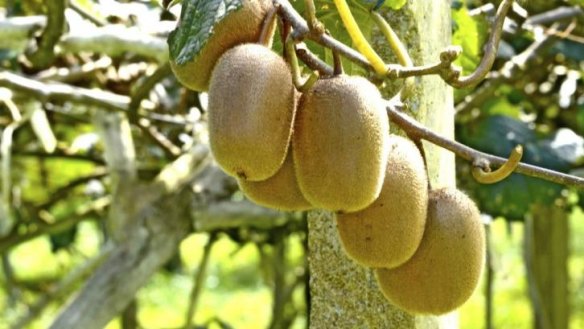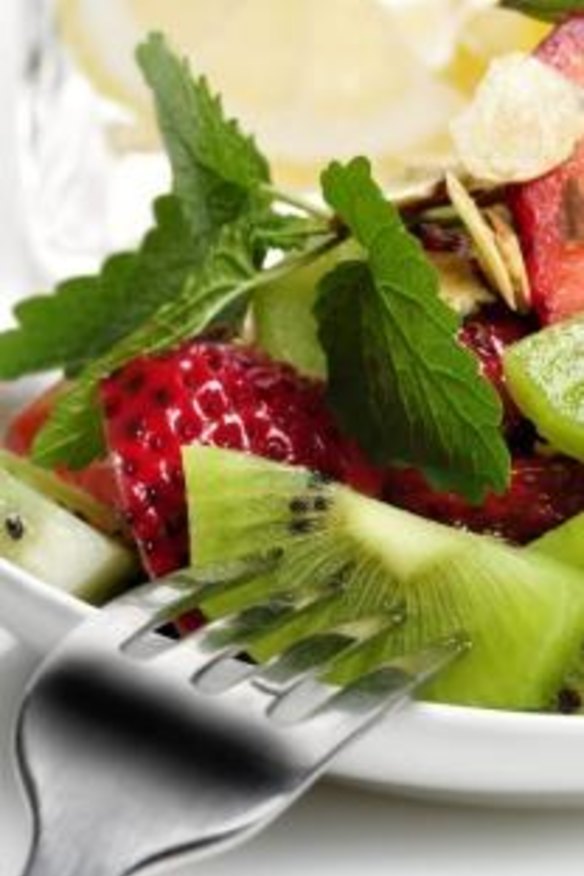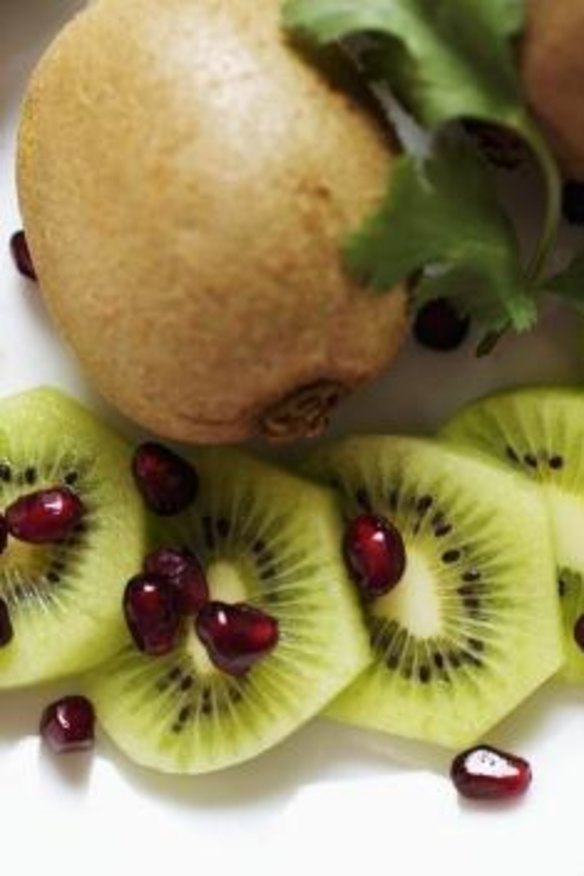Secrets of growing kiwifruit in Canberra

I admire our cousins across the Tasman but I also envy them a little. New Zealand has produced the famous Royal Gala apple and New Zealanders have displayed a real entrepreneurial spirit in developing other crops on their deep volcanic soils.
Take the kiwifruit. It was brought from China and it is related to the flowering camellia, with its own large, heart-shaped leaves and an off-white fragrant flower that has pollen stems longer than its petals. The old saying necessity is the mother of invention applies to the kiwifruit in New Zealand because a century ago fruit growers were looking for alternatives to an oversupplied tomato market and they hit on the Chinese gooseberry.
They will grow well in the Canberra region with care and attention. They can produce prolifically and provide you with a very healthy fruit in late autumn and early winter, when many other fruits have finished producing. A good, mature vine can yield more than 15 kilograms of fruit, with whole clusters of the furry brown egg-shaped fruit weighing down the woody tendrils.

They have a shallow root system so you also need to keep them well watered over summer. Select a location that will drain well, even hilling up the soil to 20cm before planting. Mulch generously around the plants in late spring.
They do not like the cold winds of late winter and they are susceptible to late frosts but they need at least 500 chill hours over winter to complete their dormant period and trigger the fruit set (that is, hours below 7 degrees Celsius). Kiwifruit also need to be in a sunny location to produce a good crop; if they are growing in a very shady location they will still produce a good leaf cover which could be very helpful over summer, , if the vines have been trained as a canopy.
Kiwifruit vines need a strong support frame as they are one of the most vigorous growing plants in cool and temperate climates. A timber trellis with a wooden horizontal beam at the 2-metre mark will provide the support for the main branches. Horizontal frames to the top timber, with taut wires spaced 40cm apart, can be fitted on to one or both sides of the trellis, to create a canopy.

Grow the main stem of the vine up to the top of the trellis then pinch off the tip to promote branching, which can then be trained to grow in both directions along the horizontal frames. The main branches will then grow side fruiting branches in the following summer. These will need to be regenerated every two or three years. Prune back hard each winter to promote the growth of replacement fruiting branches, as kiwis produce fruit on "new wood". Take time to also remove overly vigorous laterals during summer, to prevent a tangled mass of branches appearing over time.
I would recommend leaving 4 to 5 metres between plants. To grow kiwifruit successfully, you need to plant one male plant for every four to six female plants. Hayward is the most widely planted female cultivar. It produces heavy crops. Bruno, Abbott, Monty and Dexter are other good, fruit producing varieties. Tomuri, Moona and McLean are good male varieties.
Allow four years for the plants to begin producing. This may seem a long time but, when compared with apple, quince and pear trees, it is not so long. Do not pick the fruit too early. Wait until the seeds inside are completely black and the juice comes freely. Near ripe fruit will begin to soften within days, if left at room temperature. Kiwifruit can be kept in the refrigerator for several weeks after the harvest.
They are delicious when you simply slice the fruit in half and scoop out the contents. Kiwifruit can be made into jam or be added to many desserts. One favourite is pavlova topped with home-grown strawberries and kiwifruit.
Kiwifruit salad
3 kiwifruit
2 punnets strawberries
3 mandarins, peeled and sectioned
400g sliced pineapple
250g passionfruit pulp
2 bunches baby spinach leaves
Lemon syrup
½ cup lemon juice
rind of two lemons
2 tbsp castor sugar
1 cup water
Peel, slice and mix the fruit into a large bowl. Remove stems from the spinach and add to the fruit. Place the lemon rinds, lemon juice and sugar into a small saucepan and add the water. Bring to the boil and simmer for 12-15 minutes. Strain into a jug to remove the rind then allow to cool. Pour the syrup across the salad and serve.
This week in the garden
- Plant loose leaf lettuces, rocket and kale beside a north-facing wall or under the shelter of a cold frame cover.
- Plant broad beans directly into fallow garden beds to serve as a green manure crop, with the intention of cutting and slashing the half grown plants in early spring and turning them into the topsoil.
- Buy some asparagus crowns and rhubarb sets from your nursery. Ensure that you select healthy specimens with long roots. Plant into raised beds that have been enriched with lots of compost.
- When you are kept inside by bad weather, complete your records of last season’s crops, noting particular weather conditions. Plan carefully your approach to crop rotation.
- When preparing the ground for fruit tree planting, dig out to a generous width and back fill with good, loamy soil containing lots of humus. Do not plant trees into clay sump holes as you always need to provide good drainage.
- Save the July pruning work for those sunny days, as you still have some weeks to complete pruning of pome fruit trees (apples, pears and quinces).
Owen Pidgeon runs the Loriendale Organic Orchard near Hall.
Restaurant reviews, news and the hottest openings served to your inbox.
Sign up